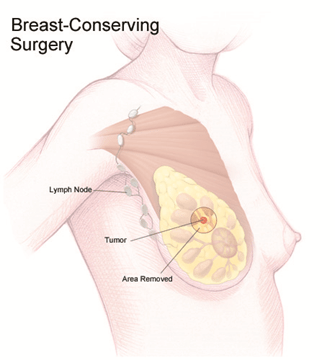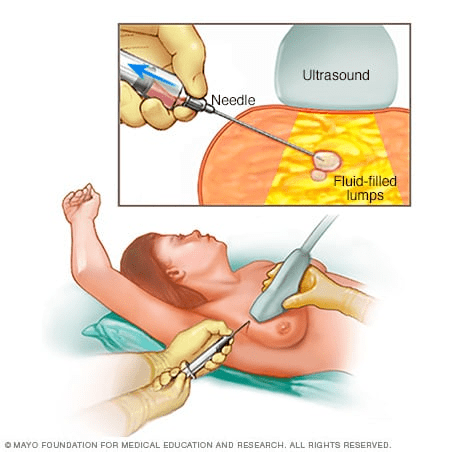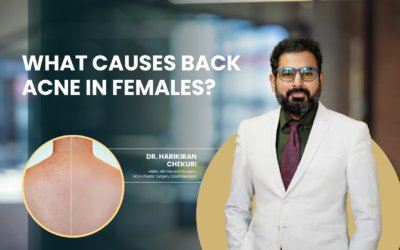Breast Lump Surgery In Hyderabad
A breast lump surgery, or a breast lump excision or breast lump biopsy, is a procedure in which a lump or abnormal area in the breast is removed and examined for the presence of cancer or other abnormal cells. The procedure is an outpatient surgery done under local or general anaesthesia. Several types of breast lump surgery include fine needle aspiration, core needle biopsy, and excisional biopsy.
Dr. Harikiran Chekuri offers Breast Lump surgery in Hyderabad at his clinic, Redefine Hair Transplant and Plastic Surgery Centre. He is an accomplished plastic surgeon in Hyderabad with nearly nineteen years of experience performing various plastic surgeries and cosmetic procedures, including breast lump removal surgeries.
The Redefine Hair Transplant and Plastic Surgery Centre is equipped with state-of-the-art medical facilities and operation theatres empowered with well-qualified doctors and professionals who offer impeccable treatment and service.

Procedures for Breast Lump Removal in Hyderabad
There are several different types of breast lump surgery procedures which are –
Fine needle aspiration (FNA): A thin, hollow needle is inserted into the lump to remove a small amount of tissue. This procedure is done to determine whether a lump is benign or malignant.
- Core needle biopsy: The surgeon uses a slightly larger needle to remove a small cylinder (or “core”) of tissue from the lump and helps to determine whether a lump is benign or malignant.
- Excisional biopsy: The entire lump or abnormal area is removed and examined. This procedure is done when a lump is found to be malignant or if the results of an FNA or core needle biopsy are inconclusive.
- Sentinel lymph node biopsy: A procedure to identify and remove the first lymph node(s) to which cancer is likely to spread is done along with the excisional biopsy.
- Mastectomy: The removal of the entire breast tissue in women with large, advanced, or inflammatory breast cancers or women with a high risk of developing breast cancer.

Factors that can affect the cost of breast lump surgery are-
Type of facility: The healthcare clinic or hospital where the surgery is performed can impact the cost. The cost of a breast lump removal surgery in a clinic is far cheaper than in a hospital
Surgeon’s fees: The surgeon’s fees will vary based on their level of experience, reputation, and location.
Anesthesia fees: The type of anesthesia used during surgery can impact the cost. General anesthesia may be more expensive than local anesthesia.
Diagnostic tests and imaging: Pre-surgical tests, such as a mammogram, ultrasound, or MRI are expensive and can increase the total cost of the surgery.
Medicines and dressings: The cost of medications and supplies, such as pain medication, dressings, and other materials needed for the procedure, can also impact the overall cost.

Don’t ignore a breast lump – early detection is key. If you or a loved one discover a lump, schedule a surgeon’s appointment right away.
When is Breast Lump Surgery recommended?
Breast lump surgery is recommended when a lump or abnormal area is found in the breast during a physical exam or imaging study, such as a mammogram. A surgery determines whether the lump is benign (non-cancerous) or malignant (cancerous) and obtains tissue samples for further analysis.
A doctor will recommend a breast lump surgery in the following situations:
- If a lump is found during a breast exam and there is no explanation for the same. (such as a cyst or fibroadenoma)
- If a suspicious area is found on a mammogram or other imaging study
- If a lump is causing pain or discomfort
- If a lump is growing or changing in size or shape
- If there is any discharge from the nipple
Please note that not all breast lumps are cancerous, and many benign breast conditions can also cause lumps or abnormal areas in the breast. Hence, it is advisable to have any breast lump or abnormal area evaluated by a medical professional to determine the cause and appropriate course of treatment.
Risks & Complications of Breast Lump Removal Surgery
Like any surgery, breast lump surgery carries certain risks, and potential complications are
- nfection: As with any surgery, there is a risk of infection at the surgical site. Symptoms of infection include redness, warmth, pain, and fever.
- Bleeding: There may be some bleeding from the surgical site following the procedure.
- Pain: Some discomfort and pain are common after breast lump surgery and are managed with over-the-counter or prescription pain medication.
- Scarring: There may be some scarring at the surgical site, which can vary in size and appearance depending on the type of surgery performed.
- Changes in breast appearance: The breast may be swollen or bruised after the surgery, and the shape and appearance of the breast may change, depending on the extent of the surgery.
- Numbness or tingling: There may be some temporary or permanent numbness or tingling in the breast or arm due to the surgery.
- Lymphedema: A condition caused by the accumulation of fluid in the soft tissues of the arm, which can occur after the removal of lymph nodes.
- Recurrence of cancer: In the case of a malignant lump, there is a chance of recurrence of cancer after surgery.
It is essential to discuss the risks and potential complications of breast lump surgery with your surgeon before the procedure and to follow their post-operative instructions to minimize the risk of complications and promote healing.
Other Non-Surgical Options for Breast Lump Removal
In addition to surgical excision, there are several other options for removing breast lumps which include:
- Cryotherapy: It is a procedure in which a very cold substance, such as liquid nitrogen, is used to freeze and destroy abnormal tissue. This method is used for benign breast lumps, such as fibroadenomas.
- Radiofrequency ablation: A procedure in which high-frequency radio waves are used to heat and destroy abnormal tissue. This method is used for benign breast lumps, such as fibroadenomas.
- Hormonal therapy: hormonal therapy may be used to shrink the lump and reduce symptoms in certain benign breast lumps, such as fibroadenomas.
- Observation: The doctor may recommend close monitoring of the lump without immediate treatment if the breast lump is small, benign, and has no symptoms.
- Radiation therapy: Radiation therapy is recommended to destroy cancer cells after surgery in case of a malignant lump.

Early detection is key – don’t ignore a breast lump.
Recovery time after breast lump removal
Recovery time after breast lump surgery can vary depending on the type of surgery performed and the individual’s overall health.
- For a fine needle aspiration (FNA) or core needle biopsy, recovery time is typically very short and patients can return to their normal activities within a day or two.
- For an excisional biopsy or lumpectomy, recovery time may be slightly longer, and patients may experience some discomfort and swelling for a few days to a week. Stitches may be removed within a week. Patients may be able to return to work or normal activities within a week, but they should avoid strenuous activities and heavy lifting for several weeks.
- For a mastectomy, recovery time can be longer, and patients may need several weeks off work to recover. In addition, the patient will require physical therapy to regain strength and range of motion in the affected arm.
- For sentinel lymph node biopsy and lumpectomy, recovery time will be similar to lumpectomy, but there may be more swelling and discomfort in the arm on the side of surgery.
Patients should follow the post-operative instructions provided by the surgeon to promote healing and minimize the risk of complications. If you experience any unusual symptoms or complications, it’s important to contact your surgeon as soon as possible.
Scar of Breast lump surgery & its removal
A breast lump surgery may leave a scar, the size and appearance of which depends on the type of surgery performed and the individual’s healing process.
For a fine needle aspiration (FNA) or core needle biopsy, the scar may be small, barely visible and located where the needle was inserted.
For an excisional biopsy or lumpectomy, the scar will be located where the lump was removed. The scar may be small and linear if the lump was small or irregular shaped if the lump was large. The scar will fade with time but may not disappear completely.
For a mastectomy, the scar will be located where the breast tissue was removed. The scar will be visible on the chest wall and may be larger if the lymph nodes were also removed.
Scarring is a natural part of the healing process after surgery, and most scars will fade over time and become less noticeable. However, in some cases, the scar may be more noticeable or uncomfortable, and it can take a while to heal. Also, doctors recommend that patients follow the surgeon’s post-operative instructions to promote healing and minimize the risk of complications.
Frequently Asked Questions
Is removing lump from the breast a major surgery?
There are various types of breast lump removal surgeries. Fine needle aspiration (FNA) and core needle biopsy are considered minor procedures and are done on an outpatient basis. Excisional biopsy or lumpectomy procedures are more invasive and require general or local anaesthesia. Mastectomy is a major surgery as it involves the removal of the entire breast tissue. It is done under general anaesthesia, and as the recovery time can be longer, patients may need several weeks to recover.
Is breast lump surgery painful?
Breast lump surgery can cause some discomfort and pain. However, a patient will experience minimal pain and some discomfort or soreness after a fine needle aspiration (FNA) or core needle biopsy, as it is done under local anaesthesia.
A patient may experience some pain or discomfort after the procedure, which is done under general or local anaesthesia, and is managed with over-the-counter or prescription pain medication after undergoing an excisional biopsy or lumpectomy. The pain subsides in a few days. On the other hand, patients who have undergone mastectomy experience pain and discomfort, especially if the surgeon removes the lymph nodes. Therefore, the surgeon will recommend pain medication to manage the pain and physical therapy to regain strength and range of motion in the affected arm.
Can breast lump come back after surgery?
A breast lump can come back after surgery, depending on the nature of the lump and the type of surgery performed. A benign lump is unlikely to come back after surgery. However, if the lump is malignant, there is a chance that some cancer cells may remain after surgery, and cancer may recur. The risk of recurrence is higher for larger or more advanced tumors.
RECENT ARTICLE
Every Single Update And Recent Story
From Our Blog
Does Hair Grow Back After Laser Hair Removal?
Yes, there can be some regrowth, but the thickness, color, and amount are normally lessened. Laser removal works on the damaged area by targeting the hair follicles. Many hair follicles are not active at a given time, hence requiring multiple treatments. At Redefine...
What Causes Back Acne in Females?
Yes, back acne in females is caused by clogged pores on the back due to excess oil, dead skin cells, and bacteria. Because the back has a high number of oil glands, it is more prone to breakouts, especially when factors like sweating, hormonal changes, or tight...
How to Whiten Skin?
Yes, skin whitening is safe for every type of skin if it is done under expert care. Professionals deal with addressing the issues of pigmentation and sun damage on the skin rather than simply bleaching it. At Redefine Hair Transplant and Plastic Surgery Center, Dr...




